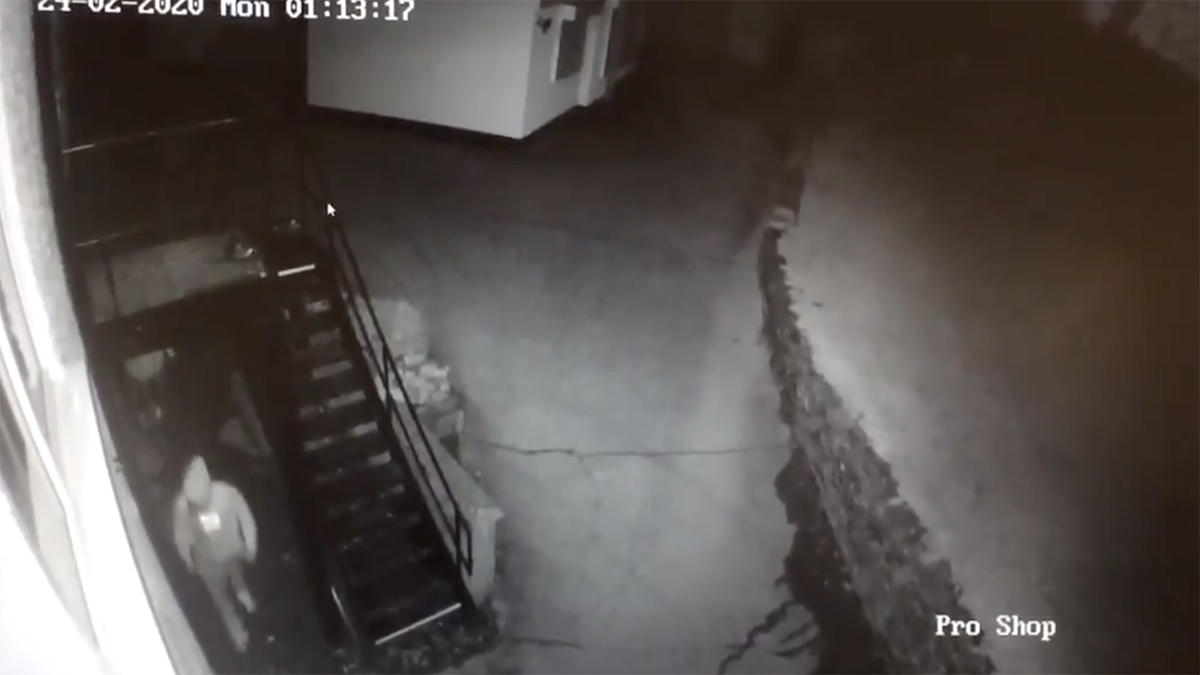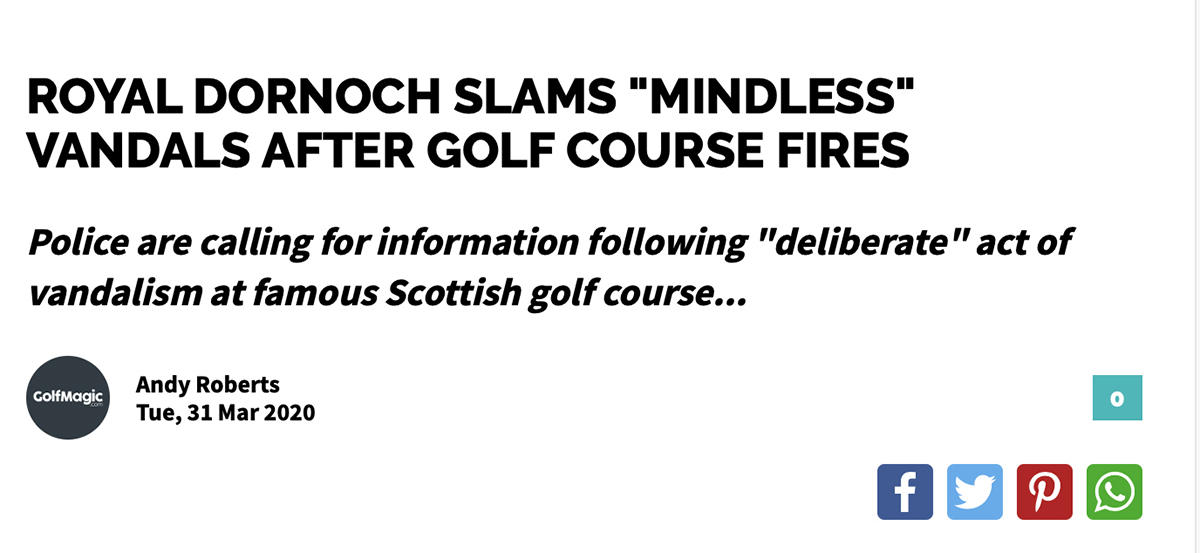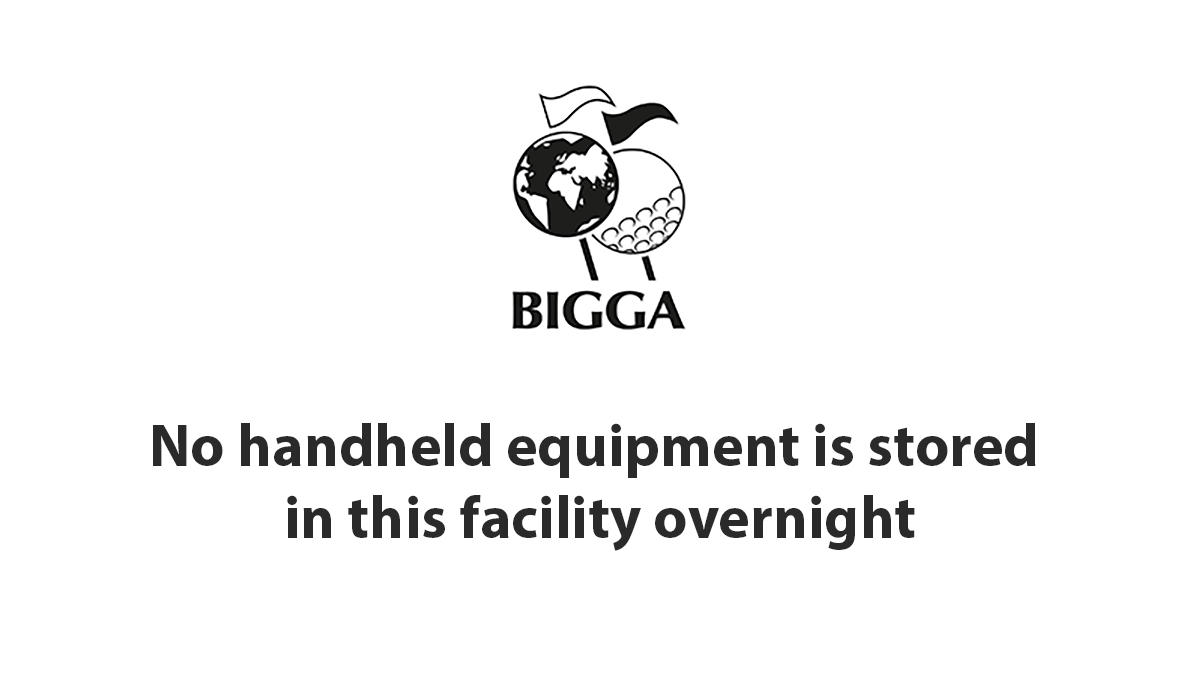- Homepage
- News and Features
- Advice on how to secure your facility
Advice on how to secure your facility

Burglars pictured at Abbeydale Golf Club in February. Pic by @AbbeydaleGolf
When the Government announced that greenkeepers could continue to work to complete essential maintenance, we worked with The R&A to provide a definition of what that term means.
The second part of the Government’s guidance said greenkeepers could also work for security purposes, enabling them to put in place measures that would protect the golf course and their equipment while fewer people were around the site.
Golf clubs have long been the victim of crime due to high value equipment being stored away from population centres in storage facilities that often haven’t been adequately funded to make them properly secure.
Unfortunately, while most of us are staying at home and doing our bit to combat the COVID-19 pandemic, there are a malicious few who see the lockdown as an opportunity to commit crime, whether that be vandalising a golf club or stealing items of equipment.


So, what can golf clubs do to up the security of their sites during this difficult time?
A City of London Police spokesperson offered this advice:
- Identify areas of your property that may be vulnerable to forced entry and have them made more secure, paying particular attention to windows and doors
- Consider reinforcing back doors, windows and weak points where entry could be gained
- Make sure any service doors are locked and secure when not in use
- Make sure you have a monitored alarm and that it’s fully operational
- Ensure your CCTV works and that it provides facial recognition and good quality images, while covering any vulnerable areas. Twenty-four hour digital CCTV is also highly recommended
- Bins should be stored away as these can be used to climb on to gain access to buildings, especially via the first floor
- Sufficient lighting around the premises can be used to deter criminals and help to improve CCTV images that are captured
- Cut back any overgrown bushes or trees that surround buildings as these can provide cover for anyone who is trying to hide from view
- In the absence of external shutters or attack-resistant laminated glass in sturdy frames, film can be applied to glass to make it more resilient.
- Consider ways to prevent ram raiders from striking by putting large rocks, piles of soil or other obstructions in front of buildings
- Make sure storerooms are locked and, where possible, keep equipment out of site
- Store buggies and other ride-on equipment inside your facilities
- Put up curtains or even large sheets of paper to stop people peering in through windows
- Make sure keys are not left on the premises and that only designated staff have access. In case of emergency, make sure there’s a list of keyholders who can be contacted
- Add signage to say you have removed all handheld equipment from the premises
Hand tools are especially vulnerable to theft as they’re easy to transport and then sell on. Make sure they’re securely stored and out of site and even something as simple as the note below could act as a further deterrent.

H&K Insurance provided some ideas to stop people trespassing and reduce vandalism on your golf course:
- Block all potential access points using bollards, rubble or fallen trees
- Make sure anything left outside at night is firmly secured, including flags or plant holders
- Put carts in a well-lit location close to main buildings (or even better, store them inside, as above)
- Support new trees with sturdy posts
- Involve and ensure it is known that you will involve the police in acts of vandalism.
A spokesperson for H&K Insurance said: “The key is to find any way possible to make it harder for vandals. They don’t tend to be the hard-working, goal-oriented types, so making the course appear to be not as easy prey is a good goal.”
Author

Karl Hansell
Karl has been head of communications for BIGGA since March 2016. His duties include editing the monthly Greenkeeper International magazine, in addition to other communications activities for the association.
